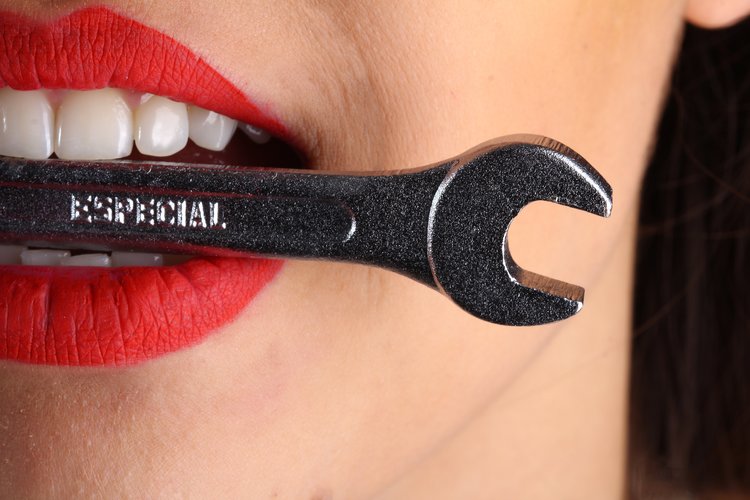The number of adults in the UK choosing to straighten their teeth is growing year on year. A survey conducted amongst members of the British Orthodontic Society in 2019 corroborates this; with 75% of members reporting an increase in private adult orthodontic treatments compared with 2016 (and three-quarters of these treat with clear aligners).
The trend appears to be global with clear aligner manufacturer, Align Technology (makers of Invisalign) reporting that in July 2019 over 7.2 million adults worldwide were either in, or have completed treatment.

But why is it that our teeth don’t grow straight naturally or are there things we are doing which cause them to move out of alignment?
Dr Rhona Eskander from the Chelsea Dental Clinic explains: “There are so many factors that can affect how our teeth grow that it’s really actually relatively unusual to see patients with naturally perfectly straight teeth.
To a greater or lesser extent, we all have some misalignment, but the degrees of misalignment varies from person to person.”
What are the factors that can create or exacerbate crooked, gappy, overlapping or twisted teeth?
1. The size of your mouth – specifically your jaw
You may have heard your dentist referring to overcrowding (where your teeth overlap). In many cases overcrowding is caused by the size of your jaw, which may be too small to accommodate all your teeth.
There is a school of thought that suggests that our modern diet has seen us eat a greater proportion of softer foods which require less chewing, which in turn has resulted in our collective jaw sizes becoming smaller.
2. Natural tooth movement with age – mesial drift
Your teeth will naturally move and shift in your mouth throughout your lifetime, while teeth themselves are of course made of a hard material, they are attached via periodontal ligaments to your jawbone.
While a periodontal ligament is durable, it can also be flexible, and as it’s a soft tissue it makes it prone to mobility.
3. Tooth decay and gum disease
Natural tooth movements, as I mentioned previously, occur throughout our lifetimes, but the degree of movement can be significantly affected by our overall dental health.
Tooth decay affects the enamel, the hard surface that covers our teeth. Enamel loss, whether it is caused by acid attacking your teeth (eg sugars) or from over-brushing, can change the shape of your tooth, which in turn can cause your teeth to move out of alignment.
Gum disease can have a significant impact on your teeth positioning; loosening the soft tissues that support your tooth structure, can lead to teeth moving within the jaw.
4. Missing Teeth
A full set of teeth in the mouth, with no significant gaps, reduces the amount of sideways movement that individual teeth can make.
Missing teeth offer a space for teeth to move into and can lead to teeth shifting alignment and becoming crooked in appearance.
This can be an advantage when treating overcrowding of course, as your dental professional will be able to utilise this space to gently give teeth the room they need.
5. Facial Injury
A significant force or hit to the mouth area can lead to teeth moving out of place.
6. Bad habits
I see quite a few patients whose teeth alignment has been affected significantly because of habits that they had never considered would have had an impact on the straightness of their teeth, including:
· Thumb sucking – over a period of time, the pressure of the thumb on the teeth and the movement itself of taking the thumb repeatedly in and out of the mouth can cause teeth, particularly those few teeth in the front top part of the mouth, to move outwards causing what is technically known as an overjet, (to you and I bucked teeth.)
· Tongue thrusting – most ‘tongue thrusters’ don’t actually know they do this until it’s pointed out to them, but I see quite a few people who have affected their dental alignment while regularly pushing their tongue forwards while they are particularly focused on something. This can create a condition known as open bite, where the top and bottom teeth don’t meet.
· Bruxism/ teeth grinding – again it’s often one of those habits people don’t realise they have, and most frequently occurs in the sleep. But over time bruxism’s can wear the teeth down, changing their shape, and in turn, lead to unwanted tooth movement.
· Poor posture – I’ve noticed this, particularly for those patients who work predominantly with a computer, and rest their face on their hands when reading their computer screens. Gradually over months and years teeth can shift position due to the forces placed on them.
· Sleep position – there is a school of thought that sleeping on your stomach over a significant number of years, can lead to your teeth moving position more than if you sleep on your side or back, as your put more pressure on your teeth. If I’m honest the jury’s out for me on this one, but I do sleep on my side!
As Rhona Eskander adds “As you can see there are a significant number of factors which can affect dental alignment. But what can we do to minimise the movement and what can we do to straighten our teeth?
Firstly, it is important to address the underlying cause – sort out health issues such as gum disease or modify habitual behaviours.
Then there are a range of options available for adults; whether it’s traditional ‘train track’ metal or ceramic wire and bracket braces, or lingual braces, where the metal wire and brackets are cemented on the back of your teeth near your tongue, or the favourite of my patients, clear aligners, like Invisalign, which use a series of removable clear aligners to gradually move your teeth into a straighter position.
The reasons for my patients opting for clear aligners range from discretion, public-facing jobs, comfort and lifestyle (sports or musical) and these underline the reason for the spike in the number of adults seeking treatment.
The other reason for the surge in adult adoption is the rise and rise of younger, digitally savvy adults who have used digital technology for most of their lives are comfortable with the internet and social media, so a digital system such as Invisalign is much more acceptable and understood by them.
Many come for treatment having already heard of Invisalign from their friends. They have appreciated how virtually invisible it is in other people’s mouths have heard from them how comfortable and how convenient the device is compared with fixed braces.
All we do is validate their concerns and explain that they won’t have the traditional issues of pain, speech issues and foods they need to avoid, and that they can take out their aligners for important sports or social occasions.
That coupled with a digital prediction of the end look of their teeth before they start treatment and they literally can’t wait to start – Millennials desire immediate gratification and experiences – which this treatment provides in spades.
